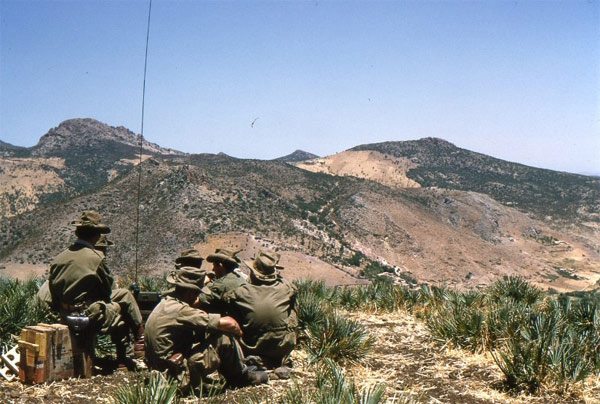There are hidden nasties from the independence war with France that are continuing to kill Algerians. Over 3,500 of them since the war ended in 1962 and rising.
I’m talking here about old land mines that were carefully laid by the French army along the border with Tunisia in the East and Morocco in the West.
The story goes as follows. The French army was taken by surprise by the ferocity and widespread nature of the campaign the nationalist FLN forces waged. The problem they faced was that the FLN was receiving support from Morocco and Tunisia. Both countries had managed to get their independence and were sympathetic to the aspirations of many Algerians to drive the French out.
One option would have been for the French to re-occupy the two neighbouring countries, but the army did not think it had the resources to do this. So the French army adopted a different tactic. It decided to seal the borders and deny the FLN of the oxygen of support it was getting. Huge resources were deployed to do this between 1956 and 1959. First to go was the ‘Ligne Pedron’ along the border with Morocco. Then in 1957 in little over 3 months on the Tunisian border, the ‘Ligne Morice’ was constructed, later strengthened by the ‘Ligne Challe’. Initially, these fences consisted of little more than barbed wire. But they were soon replaced with (for the time) advanced technology that was perfected four  years later when the Berlin Wall was built in East Germany.
years later when the Berlin Wall was built in East Germany.
A forbidden zone was set up, and the local residents either ‘evacuated’ or made to live near military installations. Radar posts were set up that could trigger scatter guns. The whole structure was connected with electric fences with 11000 volts going through them.  Even if you were prepared to risk being blown up in the minefields, cutting the fence triggered alarms, and in turn, would see French troops stationed nearby coming to investigate.
Even if you were prepared to risk being blown up in the minefields, cutting the fence triggered alarms, and in turn, would see French troops stationed nearby coming to investigate.
The FLN did not at first fully appreciate the threat the fortifications posed. They even allowed local people to work or the French army on the project provided they gave them some of the money. However, the fences nearly lost them the war as it deprived them of badly need resources from outside Algeria. Frequent attempts were made to breach them in what became known as the ‘Battle of the Frontiers’.

The French placed over 11 million mines along the fences. Some years ago I learned about mines on a ‘hostile environments’ course I was sent on by an NGO I was working for. The tutors were two burly former SAS men. They laid trails with mines (fortunately decommissioned) for us to mavigate through. We were taught how to poke the ground with old coat hangers till we touched one on the side. Best not to tap on top otherwise they could blow your arm off as they are designed to explode if you step on them. They explained that mines are usually designed to maim rather than kill, as dealing with casualties hampers an enemy more than corpses, that can just be left behind. Also, the psychological effect of mine injuries on the morale of those who are uninjured is huge.
For years after the war in Algeria, people were being killed and injured by them, and a great deal of valuable land was not available for cultivation due to the mines’ presence. To date, the Algerian army has been able to remove just under 9 million landmines. Hopefully mine clearance will soon be completed.
Incredibly, it was only in 2007 that the French army gave the Algerian government maps showing where the mines had been placed.
You can see films showing the history of the fortifications and of the dangerous business of getting rid of the mines:
You can read more about this little-known story in French at:
http://guy.perville.free.fr/spip/article.php3?id_article=95


Wow! I am fascinated by this story! The connections with Syria in the earlier post are pretty on point, too. Love history from this perspective!
LikeLike
Hi Jennifer
Thanks for your kind words. I have just replied to your other comment
LikeLike